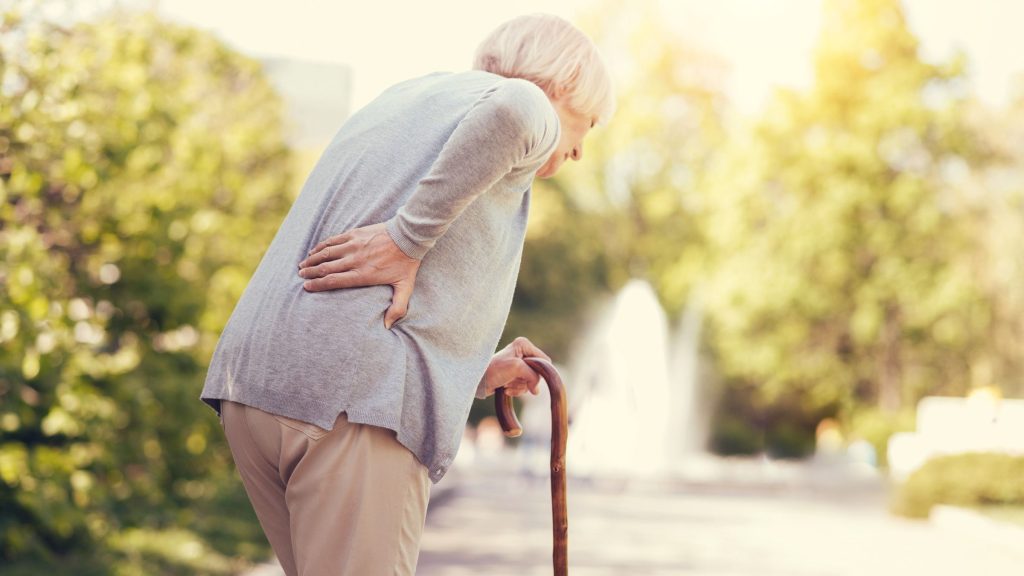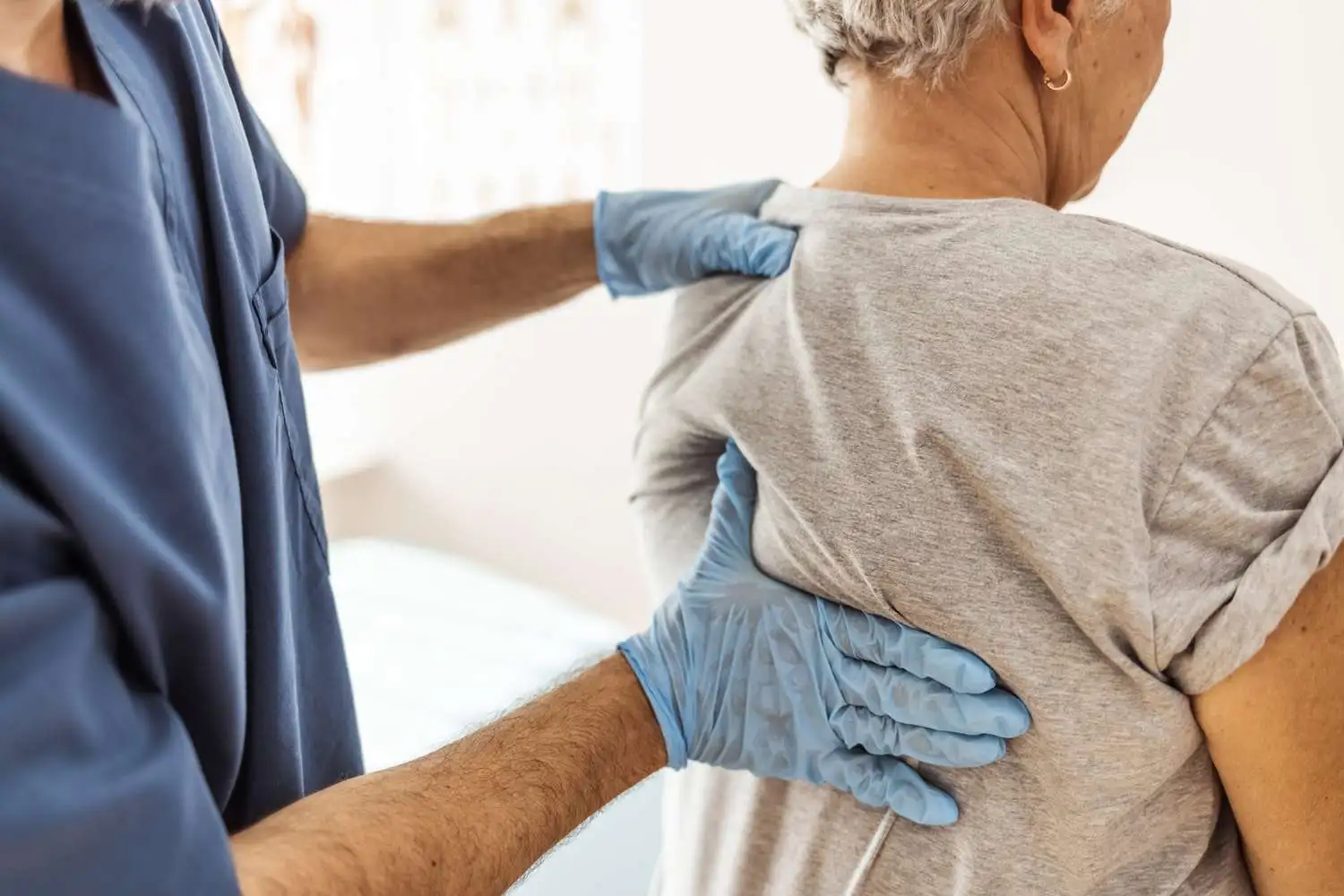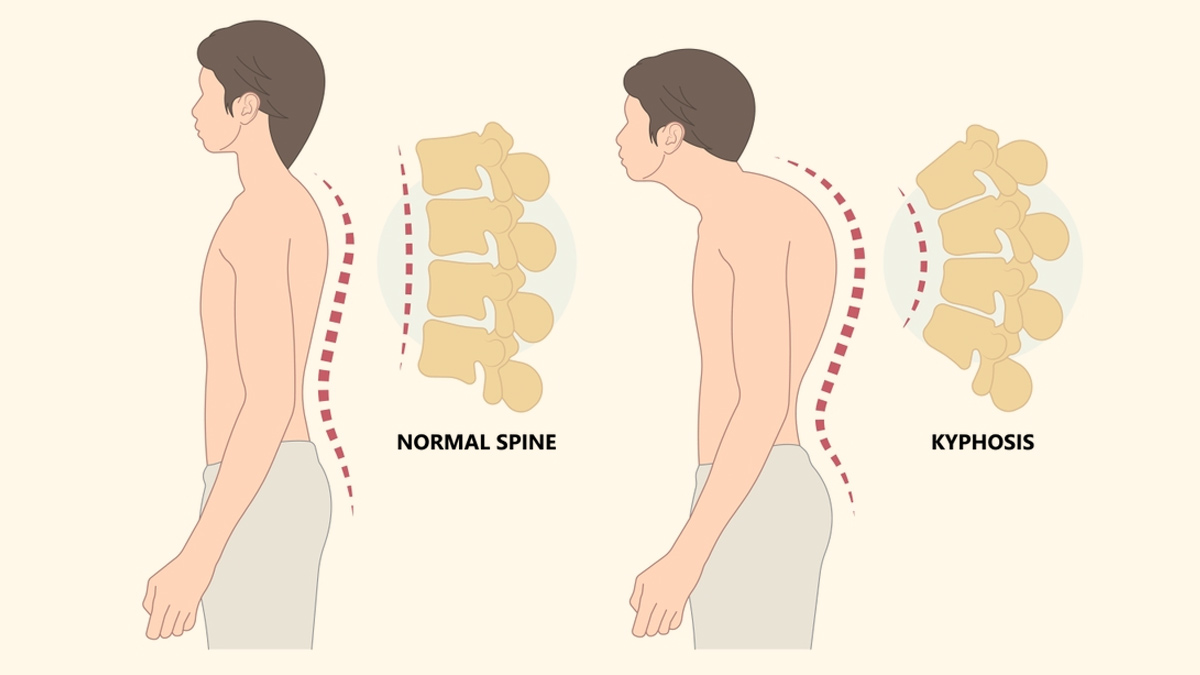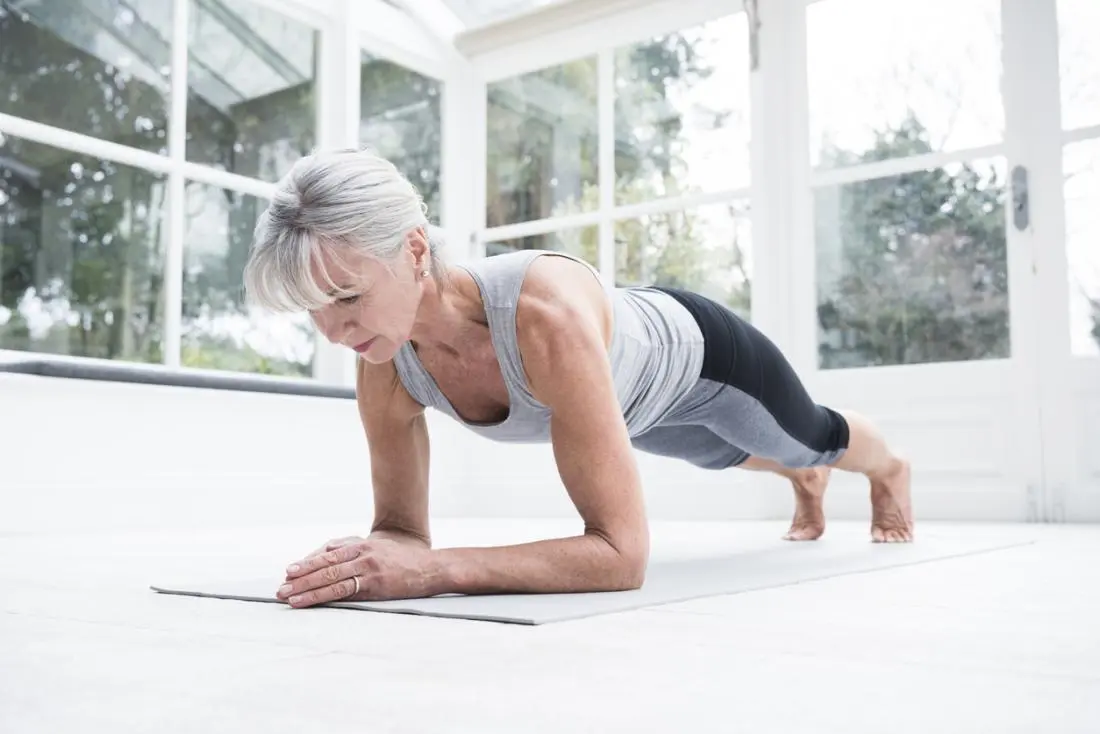
What Causes Elderly to Be Bent Over? 7 Causes of Back Bending
What causes elderly to be bent over? If you have gone for a walk in the park or the street, you have probably seen many elderly people who walk bent over, as if they have faded compared to their youth and middle age days. This phenomenon is so common that many consider aging to be the equivalent of shrinking and hunchback.
The reality is that your spine can begin to collapse as early as your 30s, leaving you helpless to pick up clothes off the top shelf in your later years. The reasons for this gradual bending are different, the most obvious of which is the increase in the curvature of the spine. Age-related slouching is known as “hunchback” and occurs when our muscle fibers degenerate over the years.
In previous article, we talked about what causes hallucinations at night in elderly? In this article from the humanhealthmag, we examine the causes of waist bending in the elderly and methods of preventing their shortness of height.
What Causes Elderly to Be Bent Over? The Cause of Short Stature in Old Age
As we said, our bones, muscles and joints are all part of the musculoskeletal system that determines our body position. The spine or vertebral column consists of bones (called vertebrae), joint spaces called intervertebral discs, and muscles. Age has a distinct effect on all three, and over time the back bends forward, resulting in an increasingly slouched posture.
Osteopenia and osteoporosis are medical terms that mean loss of bone density – more or less, respectively. Osteoporosis is the most common cause of back pain in the elderly. This disease causes the bones to become weak and brittle and eventually leads to compression fractures in the vertebrae. These fractures can collapse the vertebrae and increase the curvature of the spine.

What causes elderly to be bent over? In addition to changing intervertebral discs, muscle mass also changes with age through a process called sarcopenia. Muscles contract and may be replaced by fatty or fibrous tissue, either of which weakens the muscle. Decreased muscle strength with age contributes to the curvature of the spine.
Arthritis, especially spinal arthritis, can cause pain and stiffness in the joints and limit the movement of the spine. This can lead to arching of the back as the person tries to avoid pain and stiffness. Disc degeneration is another of the various causes of back bending in the elderly. Intervertebral discs wear out with age and can cause pain and stiffness in the spine. This can lead to a hunched back. Muscle weakness, poor posture, such as bending or hunching for a long time, and some neuromuscular diseases, such as Parkinson’s disease and muscular dystrophy, can also lead to back bending.
Symptoms of Posture Change with Age
What causes elderly to be bent over? As we age, we naturally see changes in our bodies that affect our height and overall posture. Some of these changes are:
Bones become more fragile with age and may break more easily. Bone density gradually decreases from about 30 years of age and this process accelerates in women after menopause. Osteoporosis can lead to a significant loss of bone density and an increased risk of fractures.
The overall height of people gradually decreases with age. This is mainly due to compression of the discs between the vertebrae and bending of the spine (kyphosis). Older adults may lose 1 to 3 inches (2.5 to 7.6 cm) of height by age 80.

Articular cartilage wears out with age and can lead to arthritis. Arthritis causes pain, inflammation, and stiffness in the joints and can limit range of motion. Elderly people are more prone to knee, hip, hand and spine arthritis.
Muscle weakness in the chest and abdomen can lead to a hunchback (kyphosis). This can make older people appear stooped and shorter in stature. Other postural changes include bending of the knees and hips, bending of the neck, drooping of the shoulders, and widening of the pelvis.
With age, muscle mass gradually decreases (atrophy), which leads to a decrease in strength and endurance. This can make it more difficult to perform daily activities such as walking, climbing stairs, and carrying objects. Older people may be at greater risk of falling due to muscle weakness and balance problems.
What Causes Elderly to Be Bent Over? 9 Ways to Maintain Upright
Posture
While aging is a natural process and cannot be stopped, there are steps that can be taken to minimize its effects on height and overall health. Here are some ways that seniors can maintain an upright posture:
1- Regular examinations
Regular visits to the doctor for examinations and screening for osteoporosis and other bone and joint problems are essential. The doctor can provide the appropriate treatment and preventive plan according to your condition.
2- Nutrition
A healthy and balanced diet plays a key role in maintaining bone and muscle health. Look for foods rich in calcium and vitamin D, such as dairy products, leafy greens, fish, and fortified foods. Also, make sure you get enough protein to maintain muscle mass. Avoid consuming too much salt, caffeine, and alcohol, which can affect calcium absorption.
3- Sports and physical activity
Regular exercise is essential to maintain healthy bones, muscles and joints. Weight-bearing activities such as walking, running, dancing, and weight-bearing exercises are good for strengthening bones. Strength training is also important for maintaining muscle mass and balance. Yoga, tai chi, and Pilates can help improve flexibility and range of motion. Try to get at least 30 minutes of moderate to vigorous physical activity most days of the week.
4- Maintaining a healthy weight
Obesity or being overweight can put a lot of pressure on the joints and increase the risk of developing osteoporosis. Maintaining a healthy weight with a balanced diet and regular exercise can help reduce this risk.

5- Avoid smoking
Smoking is bad for bone health and increases the risk of osteoporosis. Quitting smoking is one of the best things you can do for your overall health.
6- Taking supplements
If you have trouble getting enough calcium and vitamin D through your diet, you may need to take supplements. Talk to your doctor about whether supplements are right for you and what dosage is right for you.
7- Maintaining proper posture
Poor posture can lead to a bent spine and short stature over time. Focus on standing and sitting with your spine straight. Avoid bending or hunching for long periods of time.
8- Stress management
Chronic stress can negatively affect bone health. Finding healthy ways to manage stress, such as yoga, meditation, or spending time in nature, can be helpful.
9- Enough sleep
Adequate sleep is essential for overall health and is also important for rebuilding bones and muscles. Most adults need 7 to 8 hours of sleep a night. By following these tips, you can help maintain the health of your bones, muscles and joints in old age and prevent your height from getting shorter. Also, remember that it’s important to see your doctor regularly for personalized recommendations and osteoporosis screening.
The Time of the Start of Height Reduction
The age of onset of height shortening varies from person to person, but it generally begins around 30 to 40 years of age. Some people may lose height gradually over decades, while others may suddenly lose a few inches in a short period of time.
Concluding Remarks
What causes elderly to be bent over? In this article from humanhealthmag, we talked about it. Back bending is often combined with weakening of the spinal discs, which sit between our vertebrae and act as shock-absorbing cushions. From the age of 30 onwards, these discs begin to dry out and become stiff as they lose water.
Unfortunately, stretching to combat it won’t make your body straighter, although living a healthy lifestyle can help prevent excessive slouching. For example, a diet rich in vitamin D and calcium can help keep bones young and minimize the risk of stress fractures, while regular exercise also keeps bones strong and reduces the risk of osteoporosis.

FAQs
What Causes Elderly to Be Bent Over?
- Osteoporosis: Weakening of bones and compression fractures in vertebrae
- Arthritis: pain, stiffness and movement limitation in the spine
- Disc degeneration: wear and tear of intervertebral discs
- Muscle weakness: back and abdominal muscle weakness
- Poor posture: bending or hunching for long periods of time
- Some neuromuscular diseases: such as Parkinson’s disease and muscular dystrophy
What Are the Symptoms of Back Bending in the Older Adults?
- Crouching or bending forward
- Pain in the back and neck
- Stiffness and movement restriction
- Fatigue and weakness
How to Prevent Back Bending in the Seniors?
- By maintaining a healthy lifestyle including a balanced diet, regular exercise and regular medical checkups.
- Maintaining a healthy weight, quitting smoking, avoiding falls, and managing stress.
When Should You See a Doctor?
- If you have back pain, stiffness, limited range of motion, or back pain.
- If you have trouble walking or standing.
